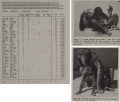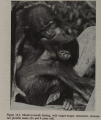Debate Guide: Historical nonadult-adult sex: Difference between revisions
The Admins (talk | contribs) mNo edit summary |
|||
| (5 intermediate revisions by 2 users not shown) | |||
| Line 1: | Line 1: | ||
:''For research, see [[Nonwestern Intergenerational Relationships]], [[Intergenerational Relationships in History]].'' | :''For research, see [[Research: Nonwestern Intergenerational Relationships|Nonwestern Intergenerational Relationships]], [[Research: Intergenerational Relationships in History|Intergenerational Relationships in History]].'' | ||
Imposition of [[Wikipedia:Antisexualism|antisexual]] values upon youth has only been the norm for the last couple of centuries in Western culture. In other cultures - so-called ‘primitive societies’ (e.g. the tribes of Papa New Guinea, Melanesia, and Aboriginal Australia), and also in ‘advanced’ societies (e.g. Ancient Greece and feudal [[Pederasty in Japanese culture|Japan]]) - and even in the West up until the 17th century - physically intimate behavior was never so rigidly labelled. What today would be termed ’sexual activity’ frequently fulfilled other purposes and functions. Phallic worship existed in almost every pre-Christian society, and served as a symbolic ritual of the vitality, strength, and essence of humankind. This frequently translated into [[Sexual rites of passage|initiation rites]], whereby boys were ‘inseminated’ - in some cases from the age of 8, either anally or orally, with the sperm of older boys and men. | |||
culture. In other cultures - so-called ‘primitive societies’ (e.g. | |||
the tribes of Papa New Guinea, Melanesia, and Aboriginal | |||
Australia), and also in ‘advanced’ societies (e.g. Ancient Greece | |||
and feudal Japan) - and even in the West up until the 17th century - | |||
physically intimate | |||
today would be termed ’sexual activity’ frequently fulfilled other | |||
purposes and functions. Phallic worship existed in almost every pre- | |||
Christian society, and served as a symbolic ritual of the vitality, | |||
strength, and essence of humankind. This frequently translated into | |||
initiation rites, whereby boys were ‘inseminated’ - in some cases | |||
from the age of 8, either anally or orally, with the sperm of older | |||
boys and men. | |||
Such acts were not regarded as ’sexual’ as contemporary society | Such acts were not regarded as ’sexual’ as contemporary society would deem it - and were not regarded as primarily erotic or sensual acts - but were an essential aspect of transferring wisdom and honor to the young boys. To such an extent ’sex’ was an important aspect of socialization; a way of linking one generation to the next - a linkage that present day society sorely lacks. Such socialization was not merely confined to the human species, but also is widespread throughout our relatives in the animal kingdom, whereby pseudo-mating acts between older males and younger males serve as a crucial aspect in promoting cohesion amongst the group. | ||
would deem it - and were not regarded as primarily erotic or | |||
sensual acts - but were an essential aspect of transferring wisdom | ==Excerpt Graphic Library== | ||
and | |||
important aspect of socialization; a way of linking one generation | The EGL on '''Broader Perspectives''' has some relevant information. Just right click/save and reproduce by uploading in short-form media to bypass character limits. | ||
to the next - a linkage that present day society sorely lacks. Such | |||
socialization was not merely confined to the human species, but | {{Template:EGLBP}} | ||
also is widespread throughout our relatives in the animal kingdom, | |||
whereby pseudo-mating acts between older males and younger males | ==References== | ||
serve as a crucial aspect in promoting cohesion amongst the group. | |||
[[Category:Debate]][[Category:Debating Points: Sociological]][[Category:Debating Points: Adults]][[Category:Debating Points: Child/Minor]] | [[Category:Debate]][[Category:Debating Points: Sociological]][[Category:Debating Points: Adults]][[Category:Debating Points: Child/Minor]] | ||
Latest revision as of 00:37, 12 April 2024
- For research, see Nonwestern Intergenerational Relationships, Intergenerational Relationships in History.
Imposition of antisexual values upon youth has only been the norm for the last couple of centuries in Western culture. In other cultures - so-called ‘primitive societies’ (e.g. the tribes of Papa New Guinea, Melanesia, and Aboriginal Australia), and also in ‘advanced’ societies (e.g. Ancient Greece and feudal Japan) - and even in the West up until the 17th century - physically intimate behavior was never so rigidly labelled. What today would be termed ’sexual activity’ frequently fulfilled other purposes and functions. Phallic worship existed in almost every pre-Christian society, and served as a symbolic ritual of the vitality, strength, and essence of humankind. This frequently translated into initiation rites, whereby boys were ‘inseminated’ - in some cases from the age of 8, either anally or orally, with the sperm of older boys and men.
Such acts were not regarded as ’sexual’ as contemporary society would deem it - and were not regarded as primarily erotic or sensual acts - but were an essential aspect of transferring wisdom and honor to the young boys. To such an extent ’sex’ was an important aspect of socialization; a way of linking one generation to the next - a linkage that present day society sorely lacks. Such socialization was not merely confined to the human species, but also is widespread throughout our relatives in the animal kingdom, whereby pseudo-mating acts between older males and younger males serve as a crucial aspect in promoting cohesion amongst the group.
Excerpt Graphic Library
The EGL on Broader Perspectives has some relevant information. Just right click/save and reproduce by uploading in short-form media to bypass character limits.
-
Janssen on Traditional Hawaii
-
Janssen (notes and sources) on Hippie Communes
-
Berger on Hippie Communes
-
More from Berger on communes
-
Don't Sleep, There Are Snakes: Life and Language in the Amazonian Jungle, by Daniel Everett.
-
Jose Nieto (2004): Children and adolescents as sexual beings: cross-cultural perspectives (chilling effect on Anthropology)
-
Some interesting historical perspectives: US and UK
-
Mark Smith, Ros Burnett on a controversial British Special Girls School
-
Wikipedia on Greek Pederasty Institution
-
Sex Atlas on cathartic Adult-Child sex play
-
Data on first marriage in prewestern societies (from the Binford Dataset)
-
RV Curve
-
Ramey's SIECUS Report - Incest and intrinsic harm
-
Inciardi on child prostitutes
-
Mirkin on CP Industry
-
Levine on CP Industry
-
Richard Green: Interactions seen as beneficial
-
Religious Laws/Norms - Judaeo Christian
-
Rind on historical pederasty throughout the world[1]
-
Rind continued
-
Rind on historical pederasty (cont'd)
-
Rind on historical pederasty (cont'd)
-
Rind on historical pederasty (cont'd)
-
Rind on historical pederasty (cont'd)
-
Rind on historical pederasty (cont'd)
-
Rind on historical pederasty (cont'd)
-
Rind combined in 1 image
-
Various excerpts on the Marquesas Islands
-
More from Suggs on the Marquesas Islands
-
Ford and Beach on cross-species/cultural data
-
Rind's summary on pederasty in animals[1]
-
One example from Bagemihl: Dolphins
-
Macaque age-gap sex play
-
Examples from Pedophilia: Biosocial Dimensions (Jay R. Feierman, ed.). New York: Springer-Verlag Publishers
-
Further from the above
-
Monkeys - direct screencap
-
Bonobo apes

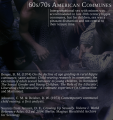

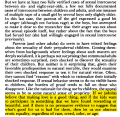

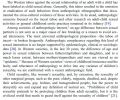




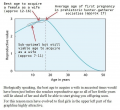




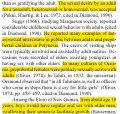

![Rind on historical pederasty throughout the world[1]](/wiki/images/thumb/Historical-Cultural-PederastyRind.jpg/120px-Historical-Cultural-PederastyRind.jpg)











